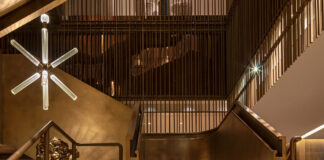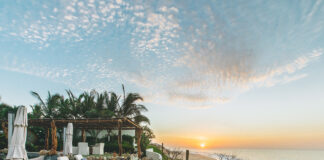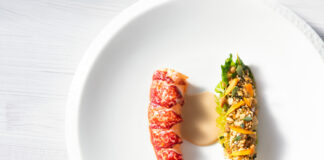- Stories
- The Swank List
- Swellegant Stays
- Fall 2025
- Summer 2025
- Spring 2025
- Winter 2024
- Fall 2024
- Summer 2024
- Spring 2024
- Winter 2023
- Fall 2023
- Summer 2023
- Spring 2023
- Winter 2023
- Fall 2022
- Summer 2022
- Spring 2022
- Winter 2021
- Summer 2021
- Spring 2021
- Winter 2020
- Fall 2020
- Winter 2019
- Fall 2019
- Spring 2019
- Winter 2018
- Fall 2018
- Summer 2018
- Spring 2018
- Winter 2017
- Fall 2017
- Summer 2017
- Spring 2017
- Winter 2016
- Fall 2016
- Summer 2016
- Spring 2016
- Letters from
- Spring 2025
- Winter 2024
- Fall 2024
- Summer 2024
- Spring 2024
- Fall 2023
- Summer 2023
- Spring 2023
- Fall 2022
- Summer 2022
- Spring 2021
- Winter 2020
- Fall 2020
- Winter 2019
- Fall 2019
- Winter 2018
- Fall 2018
- Summer 2018
- Spring 2018
- Winter 2017
- Fall 2017
- Summer 2017
- Spring 2017
- Winter 2016
- Fall 2016
- Summer 2016
- Spring 2016
- Swanky Sips
- Subscribe
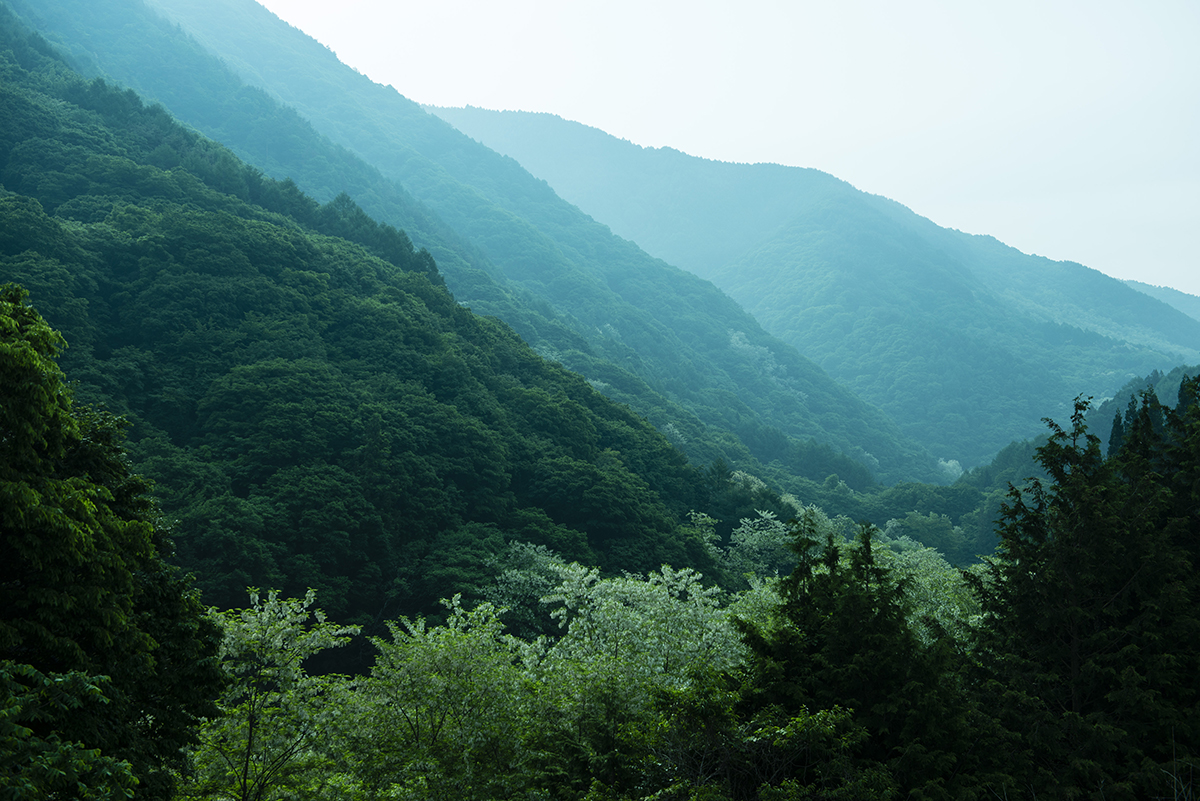
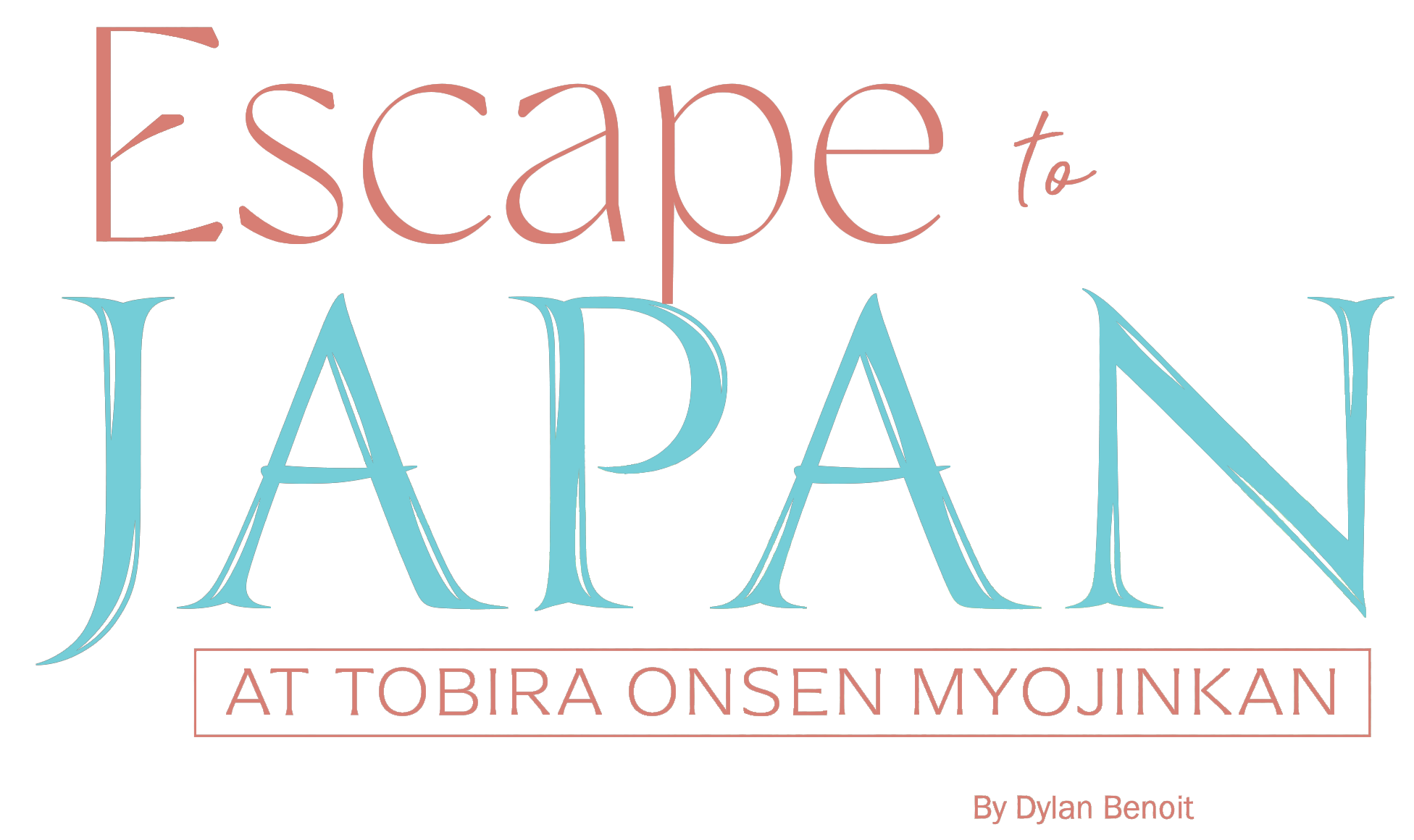
Japan is a country of stark contrasts, where modern marvels and ancient traditions intersect like a bullet train slicing through the serene countryside. At first glance, Japan may seem at odds with itself; a juxtaposition of futuristic ideas and ancient history. However, if you look a little deeper, you’ll find a unique harmony that’s woven into the very fabric of life and a deep understanding that there is more to life than the relentless rat-race. There is an ardent belief that taking time to rest, relax and recenter is critical to a happy and balanced life, and what better way to relax than by soaking away your troubles in a hot spring in the middle of the forest?
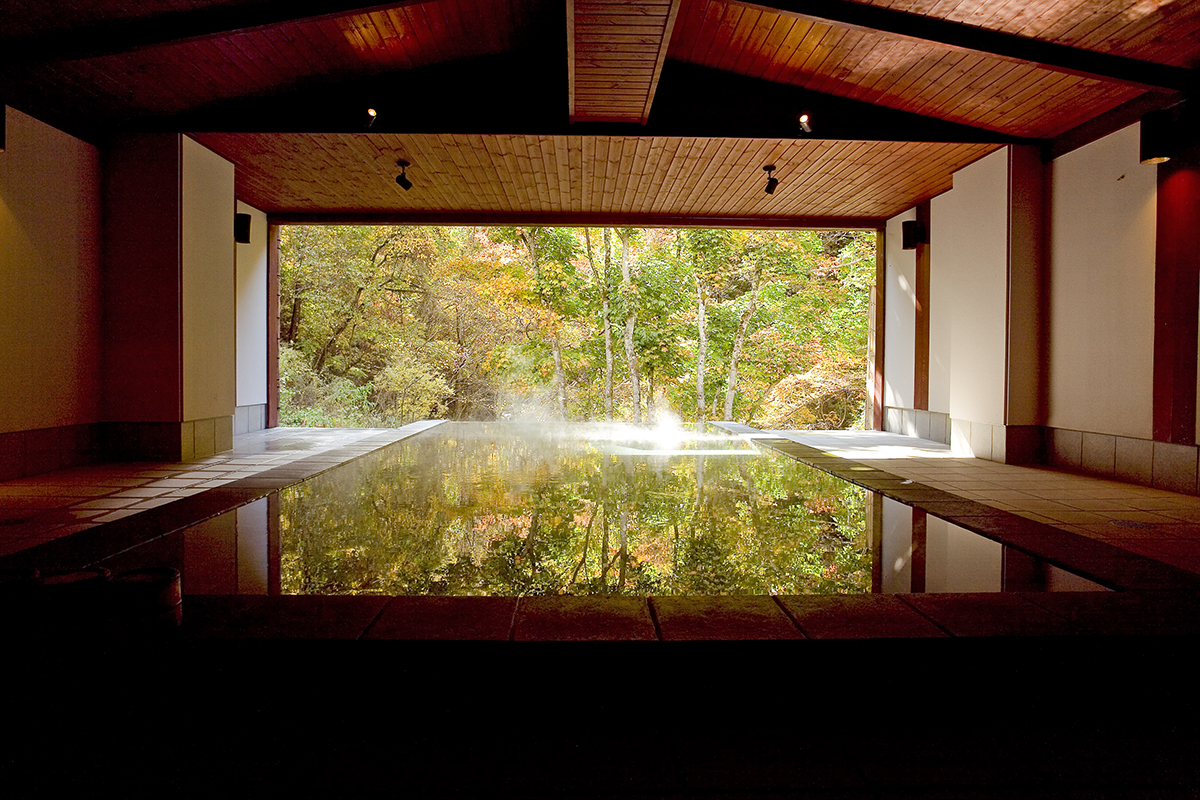
Just a few hours North of Tokyo you will find Tobira Onsen Myojinkan, a Relais and Chateaux accredited retreat nestled in the mountains of Nagano, right outside the city of Matsumoto. Whether you’re looking for a reprieve from the congestion of Tokyo or just looking to disconnect from the modern world and re-connect with nature, Myojinkan is the ideal sanctuary offering what the Japanese call “Tabiji no Naka no Ma”, which refers to the intentional pause that enriches the rhythm of life.
Surrounded by verdant forests, babbling brooks and lofty mountain peaks, Tobira Onsen Myojinkan is harmoniously integrated into the otherwise untouched wilderness. Upon arrival to the hotel, you are ushered from a private shuttle to the foyer where shoes are removed, slippers adorned, and a welcome glass of bubbles is waiting for you in the salon. After refilling your glass and being shown to your room, you are introduced to your very own yukata – a traditional and informal robe akin to the more commonly known and formal kimono. Wearing of the yukata throughout the duration of your stay is encouraged, including to breakfast and dinner. While this may be a foreign and perhaps uncomfortable concept for some, if approached with an open mind, one can very quickly become accustomed to dining at superb restaurants between onsen baths completely free from the traditional confines of pants. Unsurprisingly, donning traditional Japanese garments and meandering between onsens then heading to the salon to enjoy a tipple of local whiskey before dinner can leave one feeling as though they’ve been transported to a different place and time.
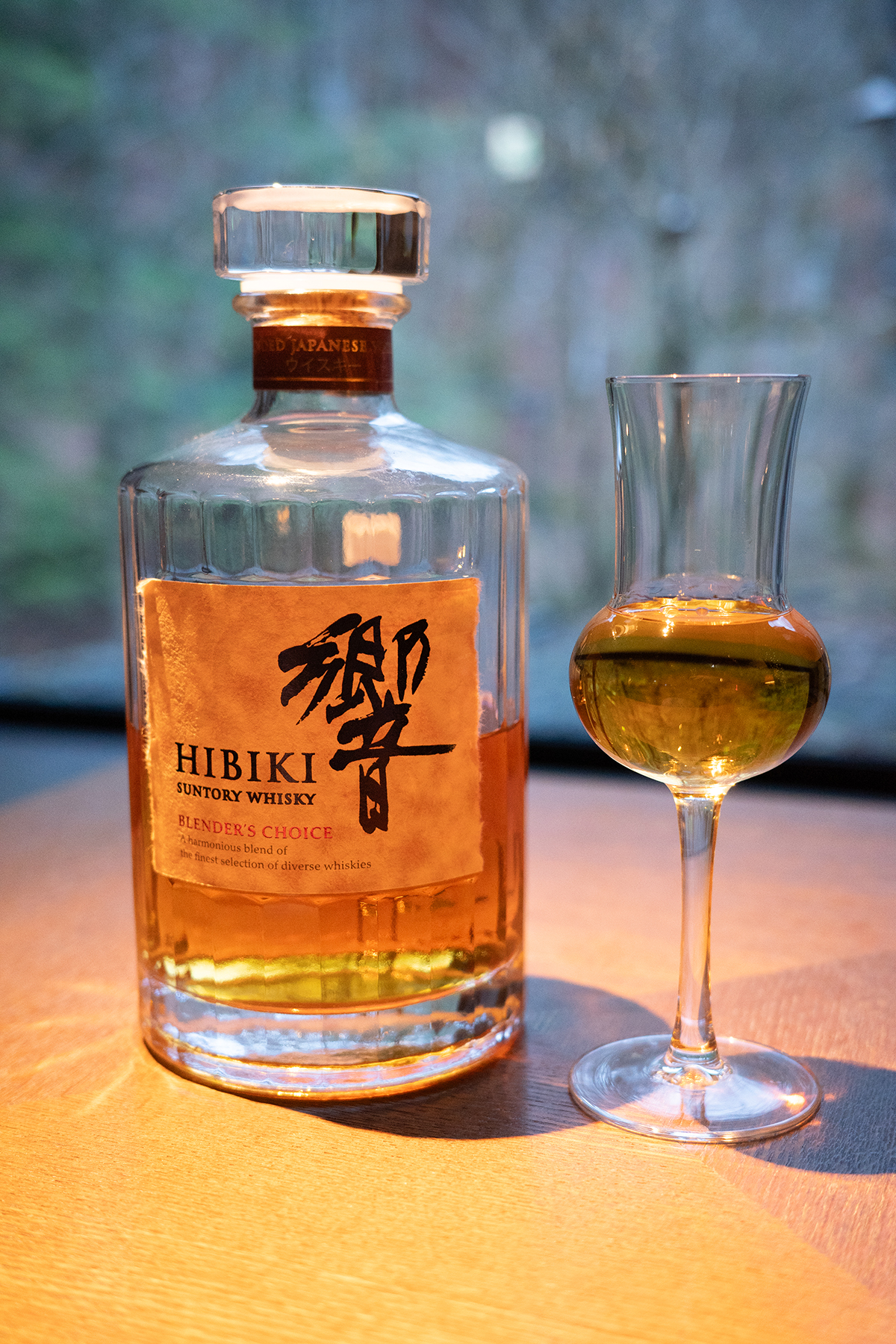

The Zen Toji Suite exemplifies minimalist luxury and features large open-concept bedroom and living spaces. At the front of the room is a sizeable, heated tatami [woven straw mat] where one can rest directly on the mat, or in large cushion-style chairs, while gazing out the window at the woods and listening to the murmuring of the passing stream. The walk-in shower room, larger than most New York apartments, features its own private onsen bath with infinity edges, filling the room with cedar’s unmistakable and intoxicating aroma. This suite was designed around the ancient concept of toji in which people would stay at a ryokan [traditional Japanese inn] for up to several weeks to take recurring therapeutic hot spring treatments for illnesses. The room is intended for guests to repeat the process of drawing onsen baths to cleanse the body and relax the mind then resting on the tatami mats; a process which is said to sooth, heal and revitalize.
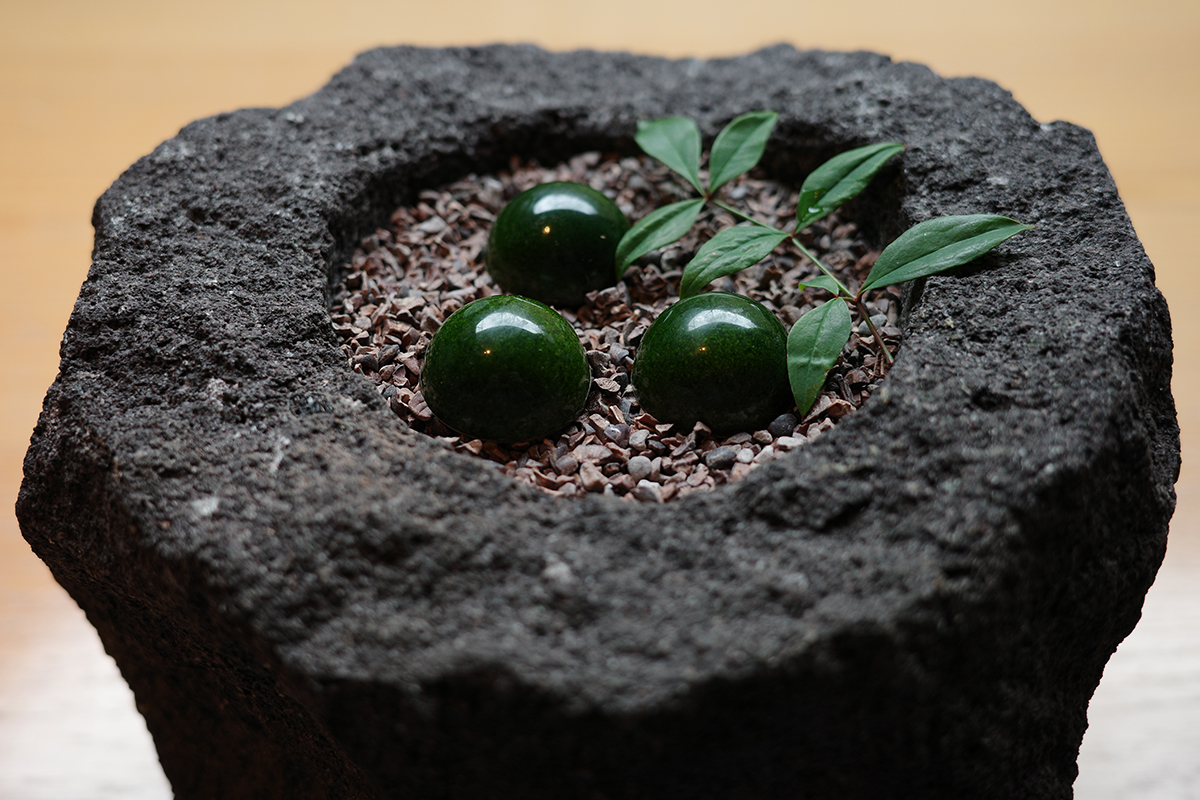
The salon offers a peaceful space with floor to ceiling windows where one can reflect, delve into a book or have quiet conversation, all while enjoying a libation from the bar or a hot cup of tea using locally foraged ingredients. The specialty tea program at Myojinkan allows guests to create their own unique brew using a selection of prepared teas as a base, then incorporate several hyper-local botanicals procured from the forest surrounding the property. In the spring, new fir tree buds are muddled along with sancho peppercorns intentionally left on the trees during the fall harvest to slowly dry over the winter months. Young fir branches are ignited to shroud the maker with a slightly sweet pine aroma before they are submerged in the tea blend, adding a hint of delicate smoke. Steeped for a few minutes then strained into a glass cup to be enjoyed, no two brews will ever be the same. The salon also offers premium Nekohama matcha, an organic matcha tea grown in Japan which uses a unique milling method to reduce bitterness while retaining its vibrant green color without added preservatives. It is as exceptional in sweets and other beverages as it is in its original tea form and has inspired the culinary team at Myojinkan to produce a selection of matcha drinks and desserts.
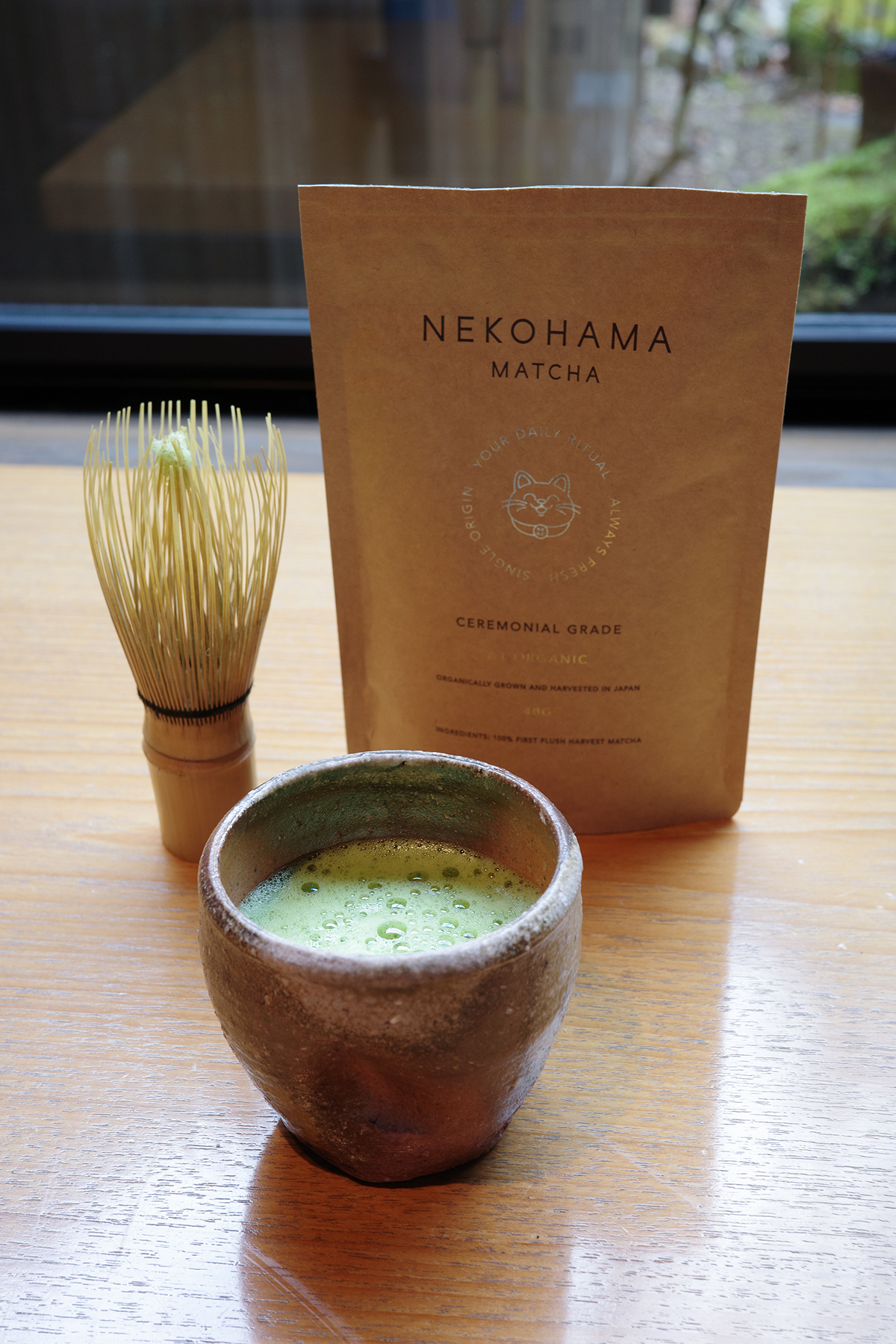
At Tobira Onsen Myojinkan there are two restaurants, overseen by the Group’s head Chef Masahiro Tanabe, offering the exceptional dining experiences one would expect from a Relais and Chateau property – Shinshu Dining Tobira which offers traditional Japanese cuisine, and Nature French Sai, serving French fine dining. There are very few Ryokan Onsens that offer cuisines other than Japanese, and while the mountains of Nagano may be an unlikely location for a French restaurant, if it wasn’t for the paired wines which are all grown and produced within the Nagano wine valley, one might be led to believe they were dining in the French Alps. Both locations offer breakfast and dinner with menus inspired by the local landscape, highlighting ingredients grown and foraged from the Matsumoto and larger Nagano area.
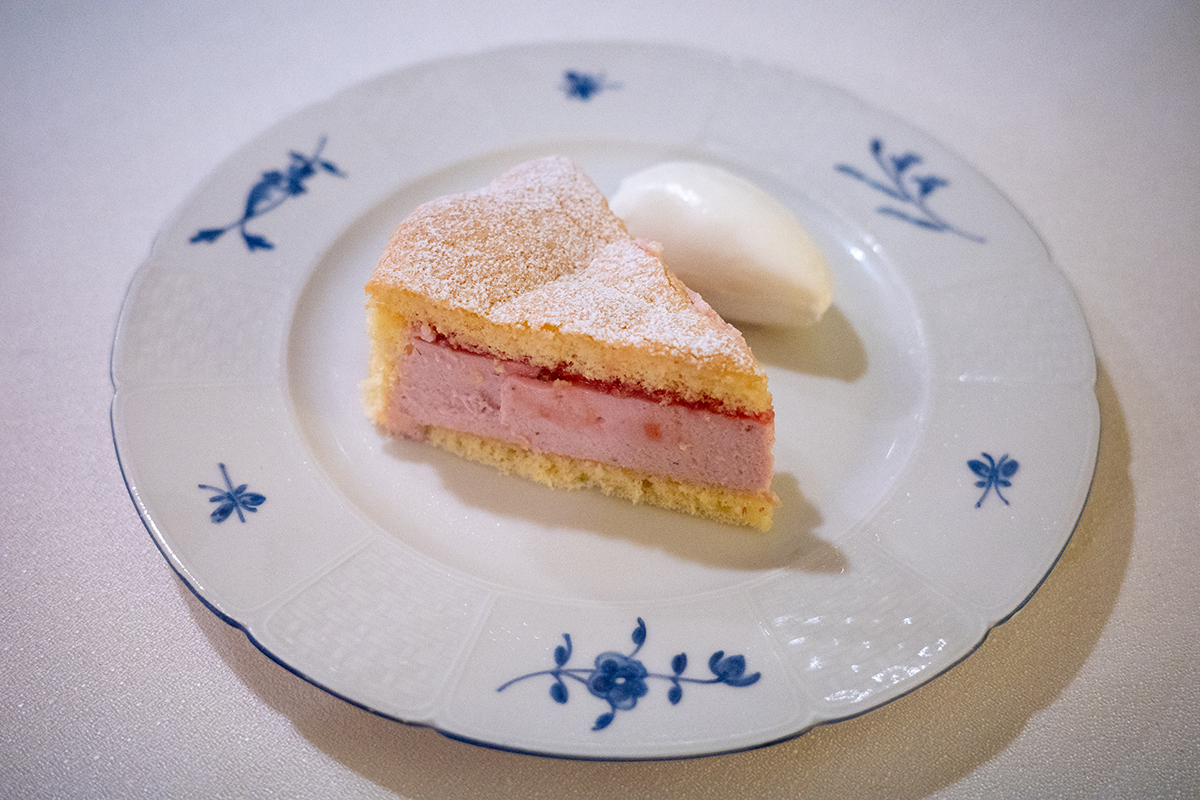
The meal at Sai, curated by Chef Tomoaki Hando, begins with a creamy and light soup made from udo, a root vegetable similar to burdock that is served alongside a crispy wonton wrapper stuffed with a filling made from fukinoto [butterbur bud] mixed with miso and ricotta. Next is a course of locally grown asparagus, the ends delicately peeled to remove the fibrous outside revealing only the tender hearts. Topped with a sous-vide poached egg and lightly dressed local greens the salad is then finished with a rich sauce made of beef jus and chopped mushrooms, faintly reminiscent of a salad Lyonnaise and paired with an unoaked Chardonnay. The dish that follows is a tried-and-true French classic featuring an immediately recognizable ingredient that is synonymous with spring – kogomi [fiddle head ferns] seasoned and lightly sauteed before being placed inside a vol-au-vents [a savory pastry bowl] made with layers of rich, buttery puff pastry, and served over a sauce of nobiru [wild garlic] and takenoko [bamboo shoot] with a beautiful semi-sweet rosé. Local yukimasu [snow trout] follows, so named for the pristine white colour of the trout’s flesh. It has been lightly smoked with local Sakura [cherry] wood which adds a unique and slightly sweet flavor to the delicate fish that is accompanied by a sauce made of cress and local herbs. The main course of veal loin is roasted on the bone and presented tableside with onion and seasonal root vegetables before being taken to the kitchen to be carved and plated. It is then sauced with a white wine demi-glace that perfectly pairs with the light, fruit forward merlot. The pre-dessert, a traditional French cheese cart adorned with a selection of imported cheeses and a few local offerings, is a welcomed surprise. Kasuga from Bosqueso Cheese Lab is a locally produced semi-firm cow’s milk cheese that is activated by washing the rind with the mineral-rich spring water from the Casuga Kasuga Onsen. Perfectly paired with local honey and house made crostini with dried fruits, the cheese course makes way for the main dessert – a Charlotte aux fraise [strawberry Charlotte cake]. This classic French mousse cake is made with lady finger biscuits, sponge, Bavarian cream and fresh Japanese strawberries, elegantly paired with an inconceivably rich and velvety fromage blanc [white cheese] ice cream.
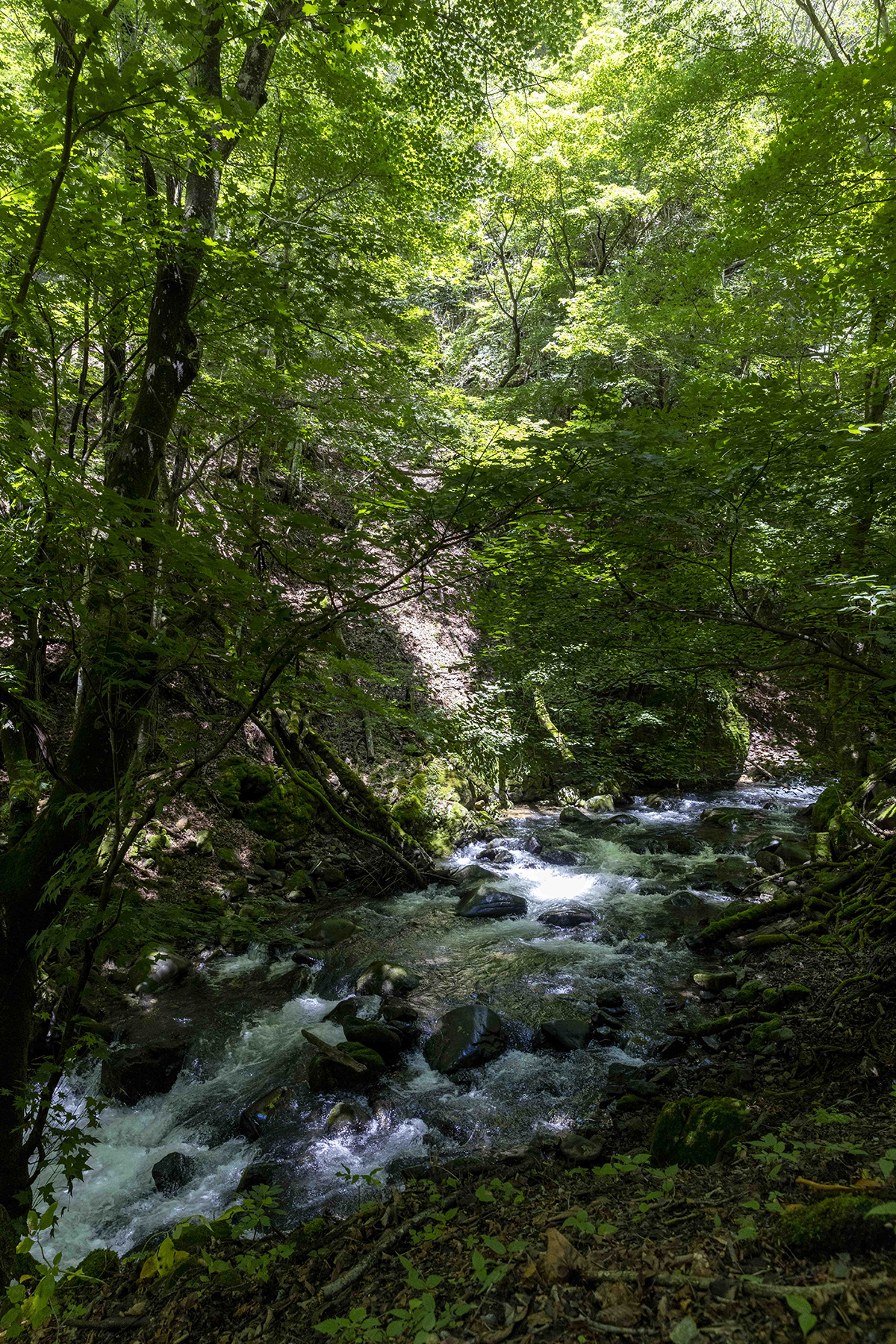
In the Shinsu dining room, a Japanese tasting menu focused on local seasonal ingredient ensues curated by head Japanese Chef Tetsuya Uchiyama. Born and raised in Azumino, a town next to Matsumoto City, Chef Uchiyama trained in various ryokans in Nagano/Shinsu prefecture and has a deep connection to the area. He is known as a master of the region’s traditional herbs and vegetables which he pairs with other hand-selected ingredients from all over Japan to create his exceptional dishes. The meal commences with small amuse bouche; a soup of burdock that is earthy, rich and creamy but without the use of dairy, accompanied by the first of what would be many expertly chosen sake pairings. Next is a seasonal appetizer plate; five individual dishes containing local ingredients such as fukinoto simmered in dashi, Sakura shrimp cooked in sweetened soy sauce, noburi [wild chives] pickled in white miso, urui [young hosta shoots] topped with karasumi [cured mullet roe] and kogomi [fiddle heads], dressed with warmed chopped walnuts.
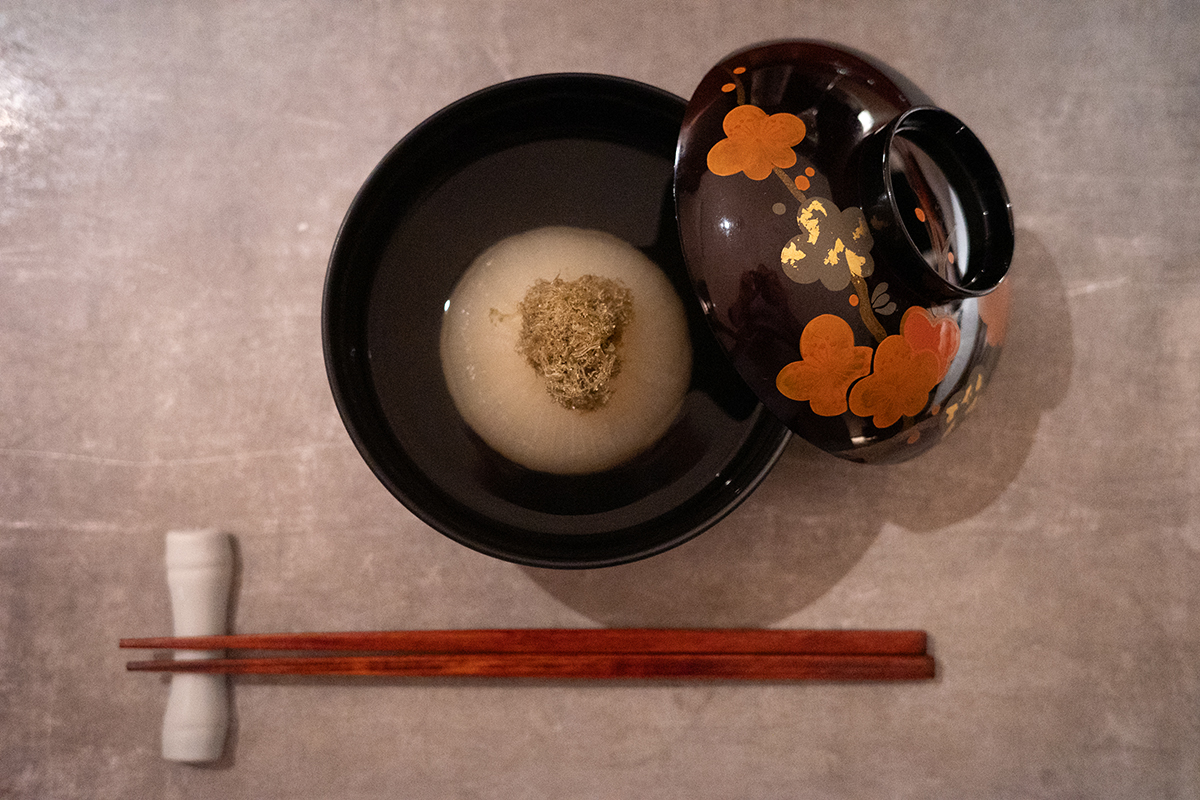
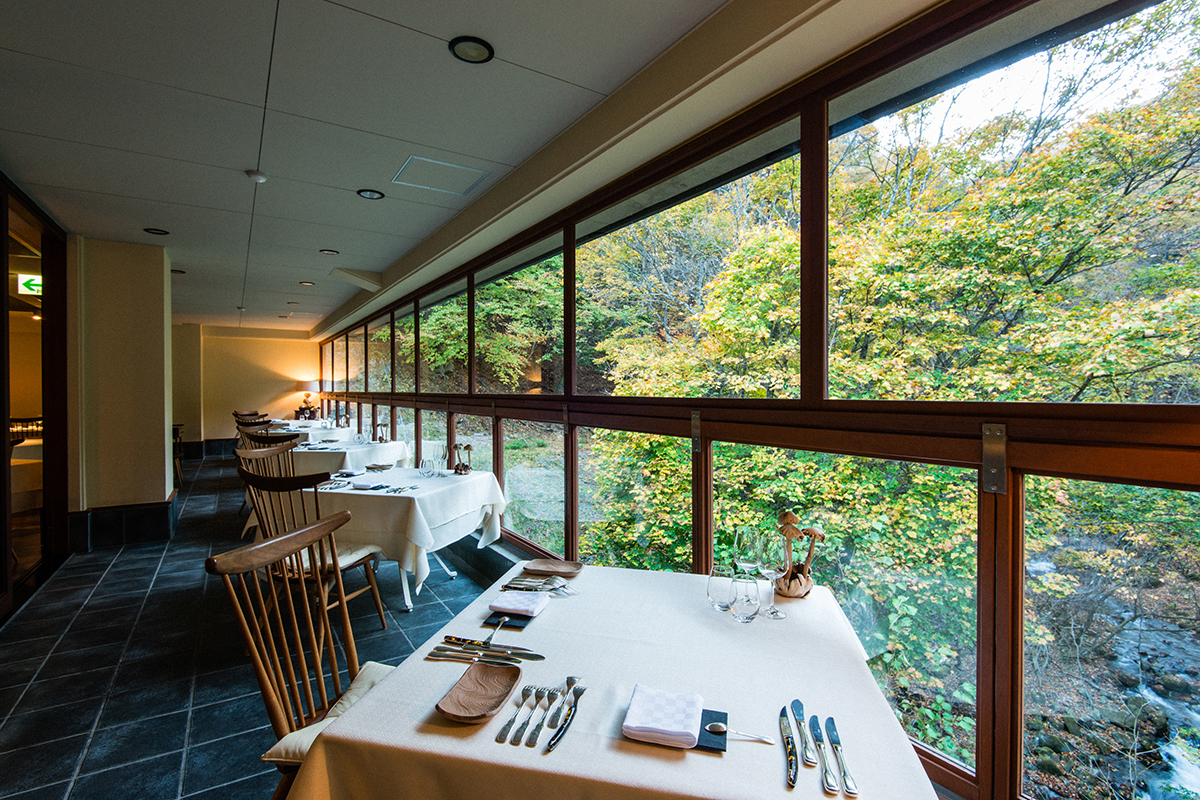
The soup course reveals a whole onion suspended in broth, so proficiently poached that it splits effortlessly under the weight of a chopstick. Crowned with tuft of konbu kelp shaved so fine it resembled savory cotton candy, the impossibly delicate onion’s innate sweetness is enveloped by the richly seasoned and umami dashi, flawlessly contrasted by the crisp freshness of the paired sake. A seasonal sashimi plate arrives with three exceptionally fresh selections. Shinshu salmon, another local uniquity produced by breeding rainbow trout and brown trout, is paired with unbelievably tender raw sweet shrimp and firm white kasago [scorpionfish]. Served with blanched wild chives, shiso leaf and freshly grated wasabi, the dish is paired with monomi, a concentrated and highly seasoned condiment of sorts, made of barley and soy as a by-product of local soy sauce production.
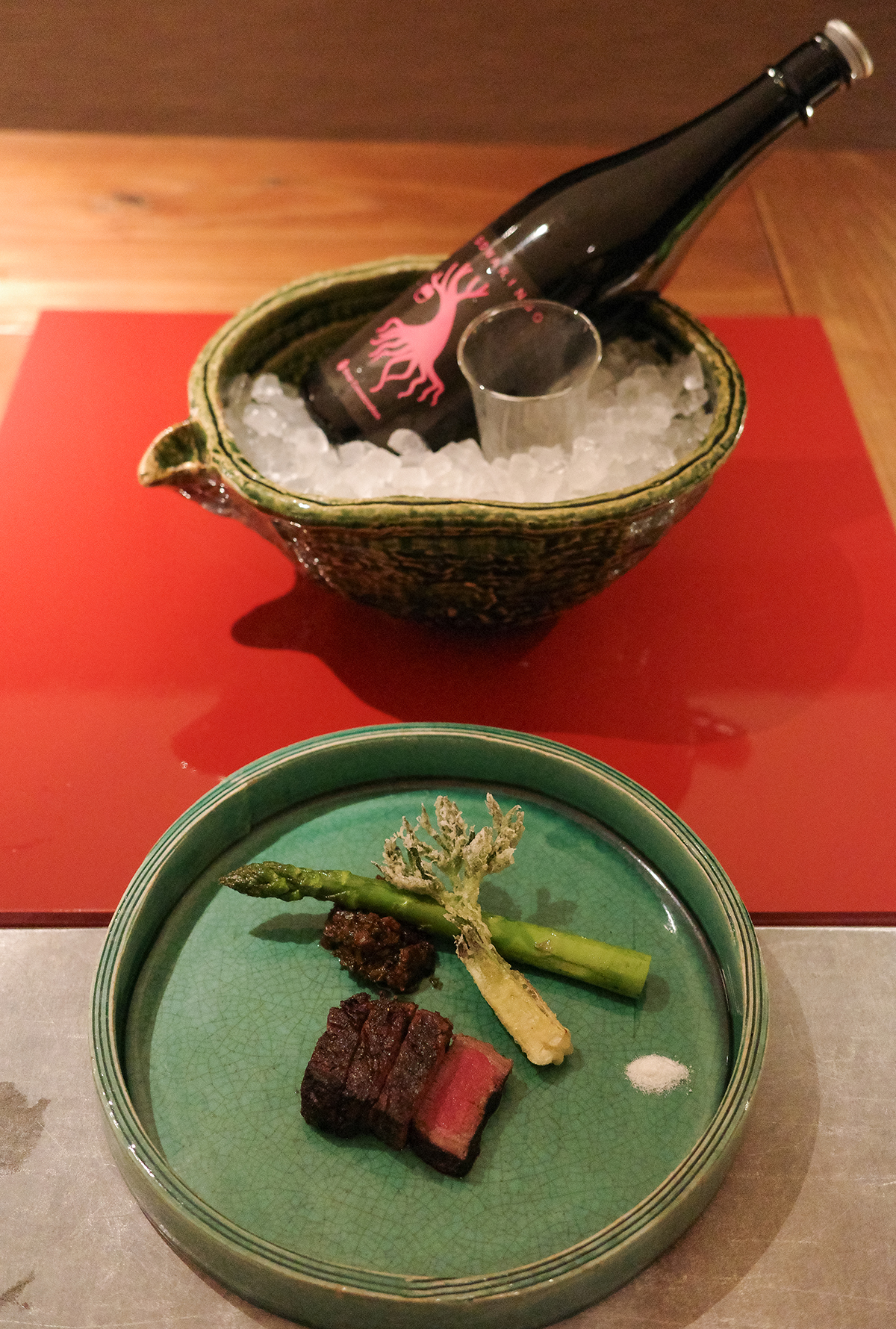
The next dish was truly inimitable. Meat of wild black bear, thinly shaved and served in a delicate broth of dashi, with a generous amount of wild watercress and fresh, locally made soba noodles, served on the side, to be added and enjoyed with a small amount of meat and herbs, one bite at a time. Grilled bamboo sprout follows, lightly poached then elegantly charred until just tender and served with tempura clams, wakame seaweed and dashi broth. This is trailed swiftly by an exceptional piece of wagyu tenderloin, perfectly cooked over bamboo charcoal for a touch of smoke and served with a single piece of udo shoot tempura, more local asparagus and a touch of Japanese sea salt on the side, in the event additional seasoning is desired. The final savory plate was a generous selection of nigiri sushi, each bite more delicious than the last, that culminated with two pieces of wagyu beef nigiri. Cooked in the style of tataki, with the edges seared and the centers still perfectly raw. For dessert, some local strawberries seasoned with a touch of sugar and spice, served with yogurt ice cream. So pure, so simple, so incredibly delicious.
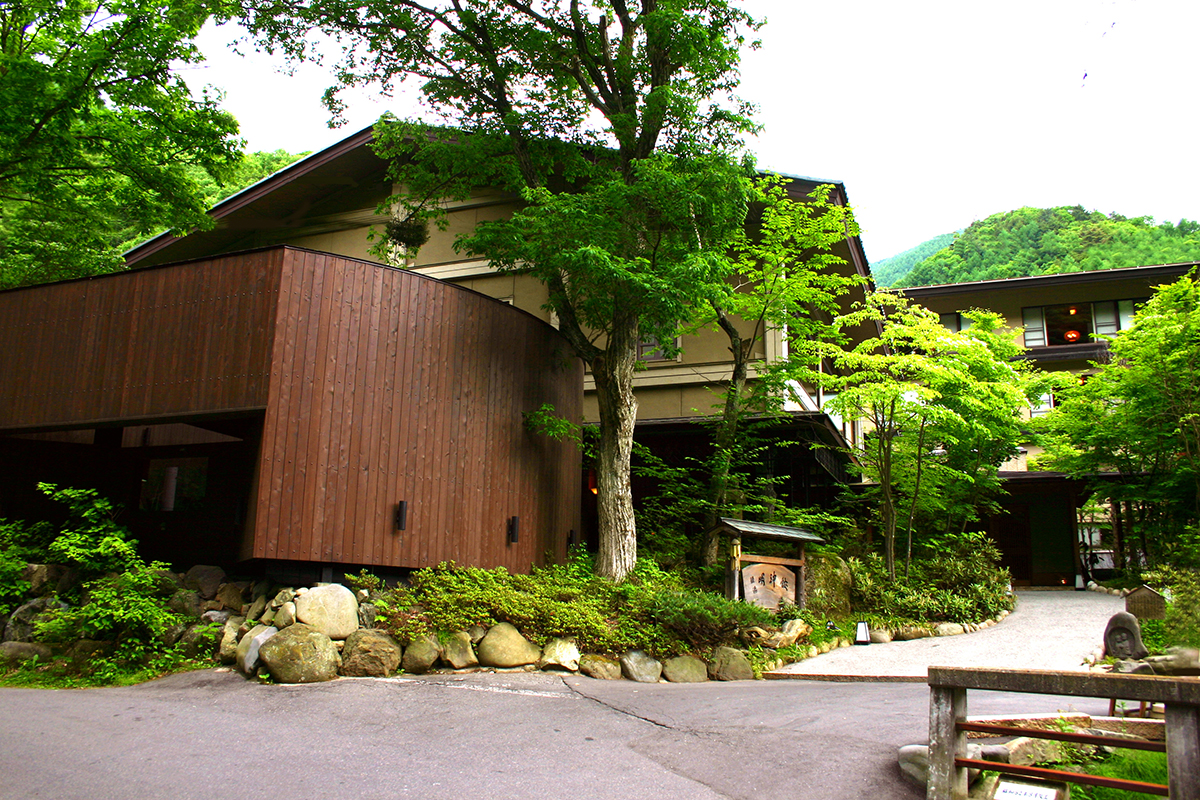
Myojinkan offers three “public” onsens baths for guests to enjoy in addition to the ones located in select suites. The naturally occurring mineral rich alkaline spring water is drawn from a local hot spring and distributed throughout the property. A long, quiet soak in a spring-fed onsen at a moderate temperature (approx. 40°C or 104°F) calms the parasympathetic nervous system, relaxes the mind and body as well as aids in softening and soothing the skin. Uniquely, all of the hot water from the showers and taps on the property is alkaline water from the hot springs, while the cold water is filtered pure water direct from the adjacent river.
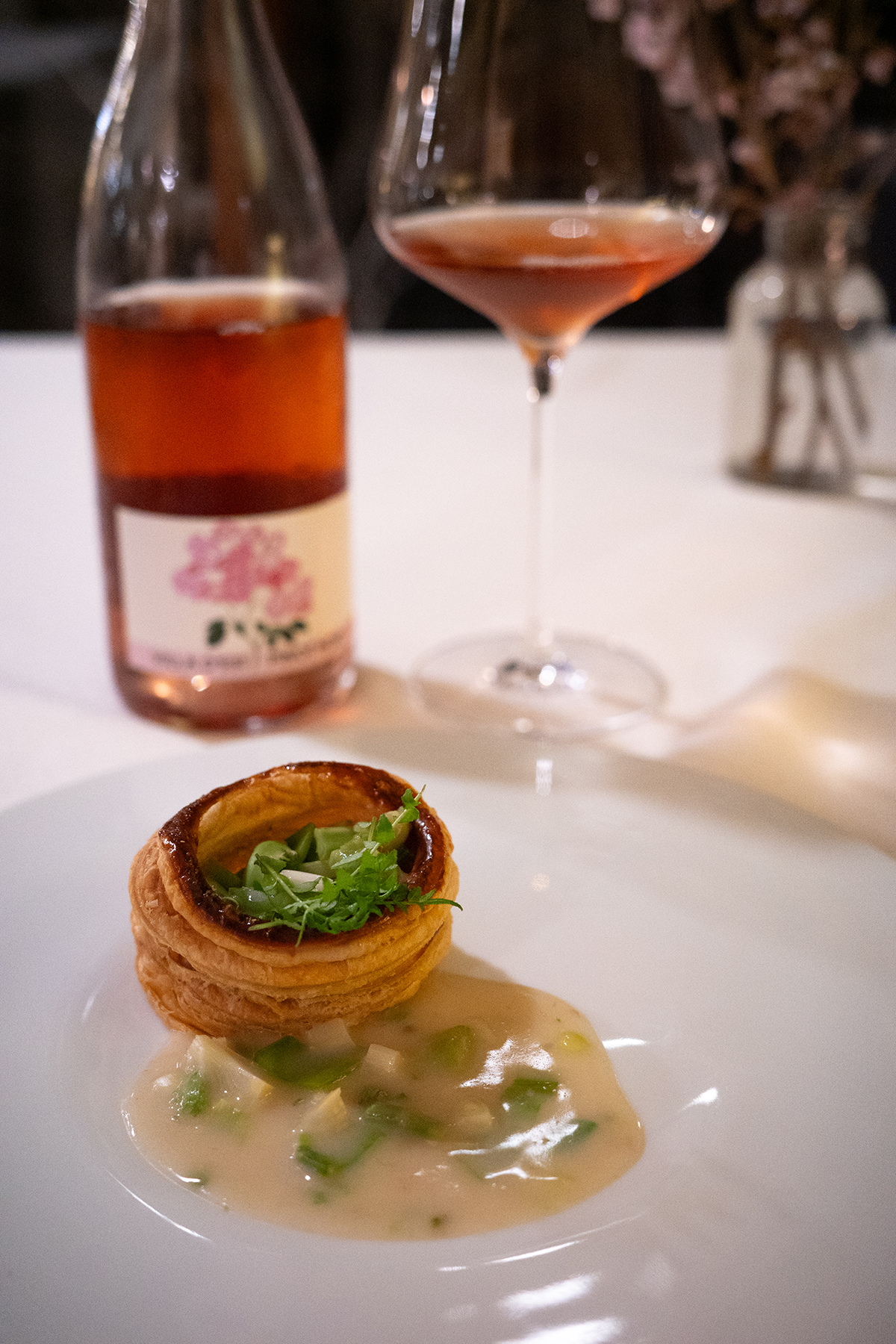
While the bathing policies of onsens throughout Japan may vary, it is customary that prior to entry one must remove all articles of clothing and prepare themselves in one of the provided shower stations, then enter the bath without garments. For this reason, the bathing areas of the public onsens are separated for male and female guests. While it is not permitted to wear any kind of garment into the bath such as underwear or bathing suits, guests may carry a towel to cover themselves during entry and exit from the baths. There are many onsens in Japan that restrict guests with tattoos from entering the baths, however at Miojinkan, tattoos are permitted.
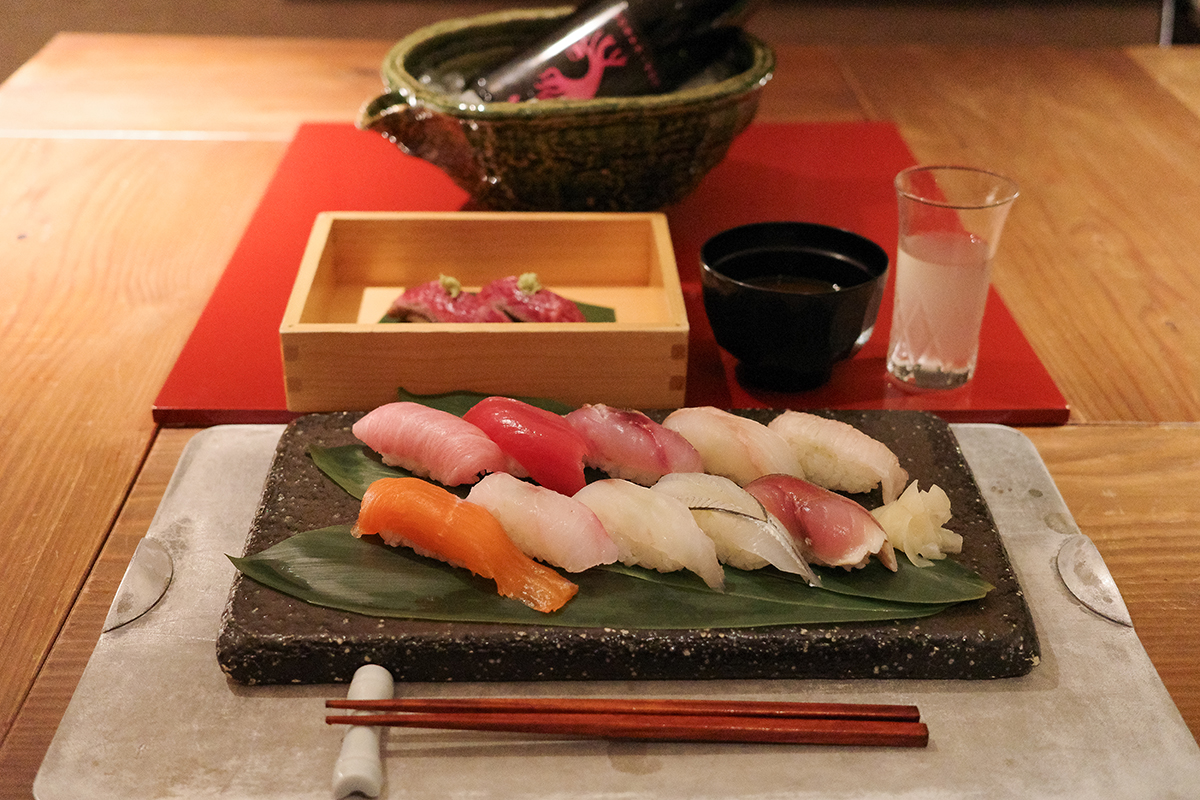
When not bathing in the onsens or enjoying the gastronomic specialties, the on-site spa Natura provides guests with an array of aroma and massage therapy treatments in rooms that are cozy and quiet with soft, relaxing finishes of tatami mats exposed wood-beam ceilings. The aroma therapy options at Natura are updated with the seasons and utilize a variety of essential oils to increase blood circulation, reduce tension and increase energy, restoring balance and harmony to the body.
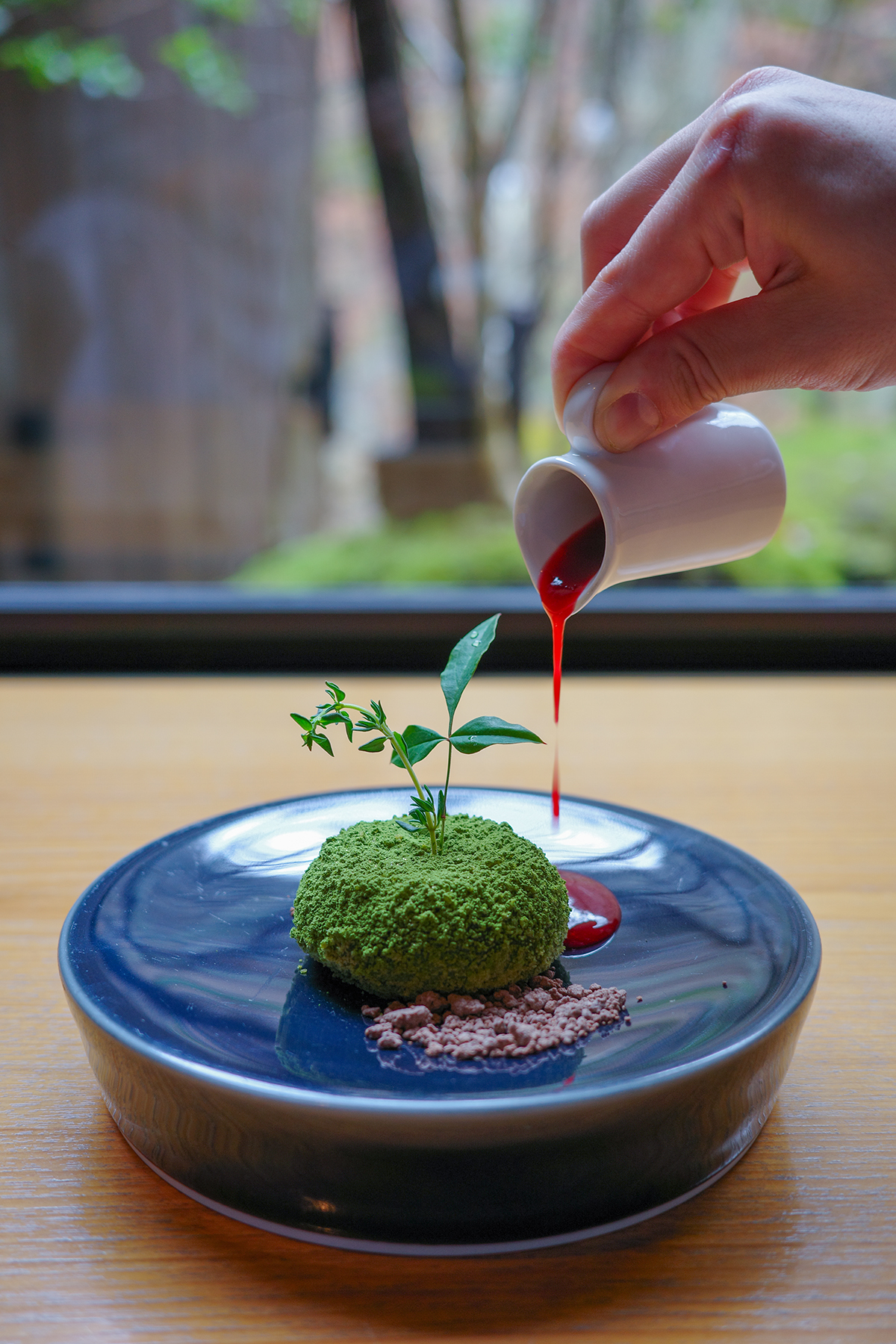
While the duality of life in Japan may at times seem conflicting, the intrinsic harmony is powerful and omnipresent. However, like most things omnipresent, our ability to notice and appreciate them often fades and we must force ourselves to slow down, take an intentional pause and get back in tune with the world around us. We must not only learn to hear the rhythm of life but also to slow down and enjoy it instead of perpetually running to the beat. So, whether you’re looking to explore the natural side of Japan, experience the rich history of ryokans or find the perfect way to punctuate your next Japanese vacation, Tobira Onsen Myojinkan is the ideal place to take a pause, nourish your body and your mind, and let the blare of daily life slowly fade into the ether; like steam evaporating off the surface of a warm onsen on a cool spring morning.
Travel Stories
Don Carlos Marbella – My Return to an Icon
Wellness Blooms at Cashel Palace
The World Is Yours
Gastronomic Gallivants: Where Luxury Meets the Fells
Monkey Island Estate – Bray
Digital Version
Subscribe to Swanky Retreats Magazine’s DIGITAL version. Read the latest issue online or download it to your computer.
Quick Access
- Stories
- The Swank List
- Swellegant Stays
- Fall 2025
- Summer 2025
- Spring 2025
- Winter 2024
- Fall 2024
- Summer 2024
- Spring 2024
- Winter 2023
- Fall 2023
- Summer 2023
- Spring 2023
- Winter 2023
- Fall 2022
- Summer 2022
- Spring 2022
- Winter 2021
- Summer 2021
- Spring 2021
- Winter 2020
- Fall 2020
- Winter 2019
- Fall 2019
- Spring 2019
- Winter 2018
- Fall 2018
- Summer 2018
- Spring 2018
- Winter 2017
- Fall 2017
- Summer 2017
- Spring 2017
- Winter 2016
- Fall 2016
- Summer 2016
- Spring 2016
- Letters from
- Spring 2025
- Winter 2024
- Fall 2024
- Summer 2024
- Spring 2024
- Fall 2023
- Summer 2023
- Spring 2023
- Fall 2022
- Summer 2022
- Spring 2021
- Winter 2020
- Fall 2020
- Winter 2019
- Fall 2019
- Winter 2018
- Fall 2018
- Summer 2018
- Spring 2018
- Winter 2017
- Fall 2017
- Summer 2017
- Spring 2017
- Winter 2016
- Fall 2016
- Summer 2016
- Spring 2016
- Swanky Sips
- Subscribe

